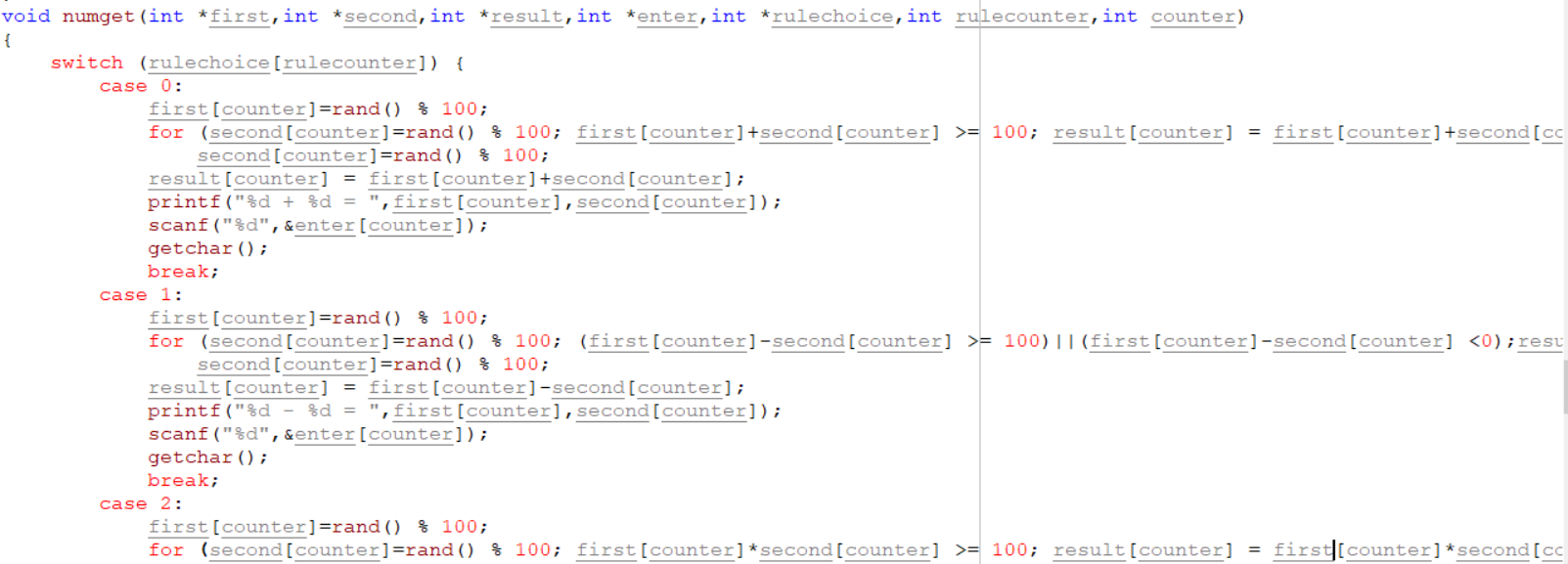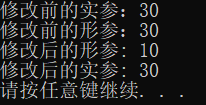结构是c语言中比较重要的一部分,但是我的使用频率不高,为了防止遗忘,就写了这篇。不要说我能不用结构就不用结构,每个事物的存在都有其必然性,在你需要的时候你就会想起它啦!
如果有很多个结构,比较容易搞混,尤其是结构带着数组、指针,再写在函数里面就更热闹了。下面这个图写着我满脸的开心。🙂

结构体的定义
1
2
3
4
5
6
| struct 结构体名{
类型名1 成员名1;
类型名2 成员名2;
……
类型名n 成员名n;
};
|
1
2
3
4
5
| struct Student{
char*name;
int age;
float height;
};
|
结构体变量的定义(三种方法)
先定义结构体类型,再定义变量
1
2
3
4
5
6
7
8
| struct Student{
char*name;
int age;
float height;
};
struct Student stu;
|
定义结构体类型的同时定义变量
1
2
3
4
5
| struct Student{
char*name;
int age;
float height;
}stu;
|
直接定义结构体类型变量,省略类型名
1
2
3
4
5
6
| struct {
char*name;
int age;
float height;
}stu;
|
结构体的注意点
不允许对结构体本身递归定义,但是结构体内可以包含别的结构体。
定义结构体类型,只是说明了该类型的组成情况,并没有给它分配存储空间,就像系统不为int类型本身分配空间一样。只有当定义属于结构体类型的变量时,系统才会分配存储空间给该变量
1
2
3
4
5
6
7
8
9
10
11
12
13
14
15
16
17
18
19
20
21
22
23
| #include <stdio.h>
int main()
{
struct Date{
int year;
int month;
int day;
};
struct Student{
char *name;
struct Date birthday;
};
struct Student stu;
stu.name="someone";
stu.birthday.year=2018;
stu.birthday.month=8;
stu.birthday.day=15;
printf("%s\n",stu.name);
printf("%d %d %d\n",stu.birthday.year,stu.birthday.month,stu.birthday.day);
}
|
结构体的初始化
将各成员的初值,按顺序地放在一对大括号{}中,并用逗号分隔,一一对应赋值。
注意一定是用大括号!!字符型的用””,int or float就用数值。
只能在定义变量的同时进行初始化赋值,初始化赋值和变量的定义不能分开。
1
2
3
4
5
| struct Student {
char *name;
int age;
};
struct Student stu = {"MJ", 27};
|
1
2
3
4
5
6
7
8
9
10
11
| #include <stdio.h>
int main()
{
struct {
char *name;
int age;
}stu[2]={{"ta",19},{"ni",19}};
printf("%s %d\n",stu[0].name,stu[0].age);
printf("%s %d\n",stu[1].name,stu[1].age);
}
|
结构体的使用
一般对结构体变量的操作是以成员为单位进行的,引用的一般形式为:结构体变量名.成员名
(2)行对结构体的age成员进行了赋值。”.”称为成员运算符,它在所有运算符中优先级最高。
1
2
3
4
5
6
| struct Student {
char *name;
int age;
};
struct Student stu;
stu.age = 27;
|
相同类型的结构体变量之间可以进行整体赋值。
1
2
3
4
5
6
7
8
9
| 3、相同类型的结构体变量之间可以进行整体赋值
struct Student {
char *name;
int age;
};
struct Student stu1 = {"MJ", 27};
struct Student stu2 = stu1;
printf("age is %d", stu2.age);
|
结构体作为函数参数
我记得期末考试的时候好像出了这么一道题。
将结构体变量作为函数参数进行传递时,其实传递的是全部成员的值,也就是将实参中成员的值一一赋值给对应的形参成员。因此,形参的改变不会影响到实参。
1
2
3
4
5
6
7
8
9
10
11
12
13
14
15
16
17
18
19
| #include <stdio.h>
struct Student{
int age;
} ;
void test(struct Student stu){
printf("修改前的形参:%d \n",stu.age);
stu.age = 10;
printf("修改后的形参: %d \n",stu.age);
}
int main(){
struct Student stu = {30};
printf("修改前的实参:%d \n",stu.age);
test(stu);
printf("修改后的实参: %d \n",stu.age);
return 0;
}
|

可以把结构作为函数参数,传参方式与其他类型的变量或指针类似。
1
2
3
4
5
6
7
8
9
10
11
12
13
14
15
16
17
18
19
20
21
22
23
24
25
26
27
28
29
30
31
32
33
34
35
36
37
38
39
40
41
42
43
44
45
| #include <stdio.h>
#include <string.h>
struct Books
{
char title[50];
char author[50];
char subject[100];
int book_id;
};
void printBook( struct Books book );
int main( )
{
struct Books Book1;
struct Books Book2;
strcpy( Book1.title, "C Programming");
strcpy( Book1.author, "Nuha Ali");
strcpy( Book1.subject, "C Programming Tutorial");
Book1.book_id = 6495407;
strcpy( Book2.title, "Telecom Billing");
strcpy( Book2.author, "Zara Ali");
strcpy( Book2.subject, "Telecom Billing Tutorial");
Book2.book_id = 6495700;
printBook( Book1 );
printBook( Book2 );
return 0;
}
void printBook( struct Books book )
{
printf( "Book title : %s\n", book.title);
printf( "Book author : %s\n", book.author);
printf( "Book subject : %s\n", book.subject);
printf( "Book book_id : %d\n", book.book_id);
}
|
指向结构体的指针变量
1、每个结构体变量都有自己的存储空间和地址,因此指针也可以指向结构体变量
2、结构体指针变量的定义形式:struct 结构体名称 *指针变量名
3、有了指向结构体的指针,那么就有3种访问结构体成员的方式
(1)、结构体变量名.成员名
(2)、(*指针变量名).成员名
(3)、指针变量名->成员名
1
2
3
4
5
6
7
8
9
10
11
12
13
14
15
16
| #include<stdio.h>
int main()
{
struct Student{
char *name;
int age;
};
struct Student stu = {"OJ",18};
struct Student *p;
p = &stu;
printf("name=%s,age = %d \n",stu.name,stu.age);
printf("name=%s,age = %d \n",(*p).name,(*p).age);
printf("name=%s,age = %d \n",p->name,p->age);
return 0;
}
|

您可以定义指向结构的指针,方式与定义指向其他类型变量的指针相似,如下所示:
struct Books *struct_pointer;
现在,您可以在上述定义的指针变量中存储结构变量的地址。为了查找结构变量的地址,请把 & 运算符放在结构名称的前面,如下所示:
struct_pointer = &Book1;
为了使用指向该结构的指针访问结构的成员,您必须使用 -> 运算符,如下所示:
struct_pointer->title;
1
2
3
4
5
6
7
8
9
10
11
12
13
14
15
16
17
18
19
20
21
22
23
24
25
26
27
28
29
30
31
32
33
34
35
36
37
38
39
40
41
42
43
44
45
| #include <stdio.h>
#include <string.h>
struct Books
{
char title[50];
char author[50];
char subject[100];
int book_id;
};
void printBook( struct Books *book );
int main( )
{
struct Books Book1;
struct Books Book2;
strcpy( Book1.title, "C Programming");
strcpy( Book1.author, "Nuha Ali");
strcpy( Book1.subject, "C Programming Tutorial");
Book1.book_id = 6495407;
strcpy( Book2.title, "Telecom Billing");
strcpy( Book2.author, "Zara Ali");
strcpy( Book2.subject, "Telecom Billing Tutorial");
Book2.book_id = 6495700;
printBook( &Book1 );
printBook( &Book2 );
return 0;
}
void printBook( struct Books *book )
{
printf( "Book title : %s\n", book->title);
printf( "Book author : %s\n", book->author);
printf( "Book subject : %s\n", book->subject);
printf( "Book book_id : %d\n", book->book_id);
}
|
参考文献
C 结构体| 菜鸟教程
C语言入门教程24-结构体· C语言编程基础· 看云
c语言中的关键字struct(结构体)的用法- 简书


